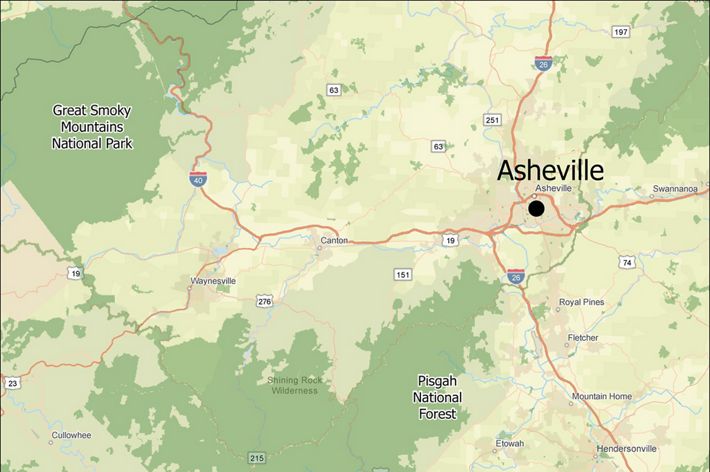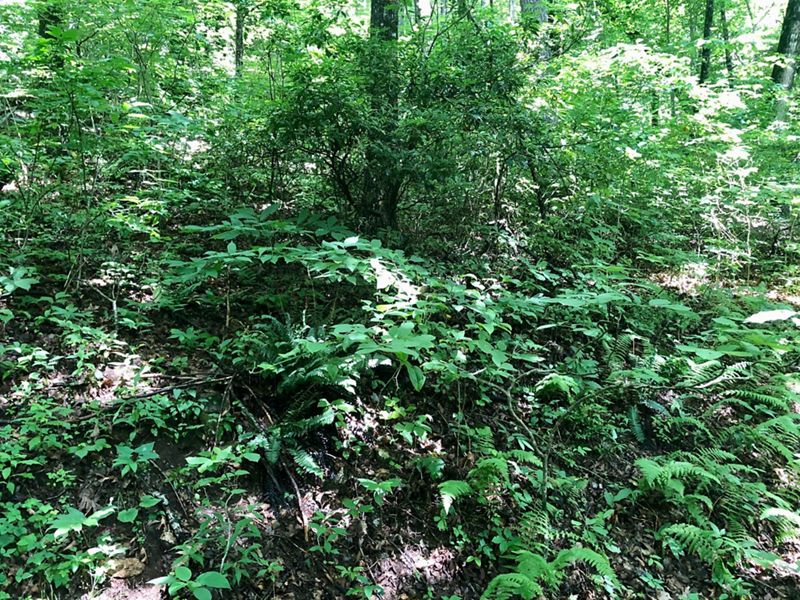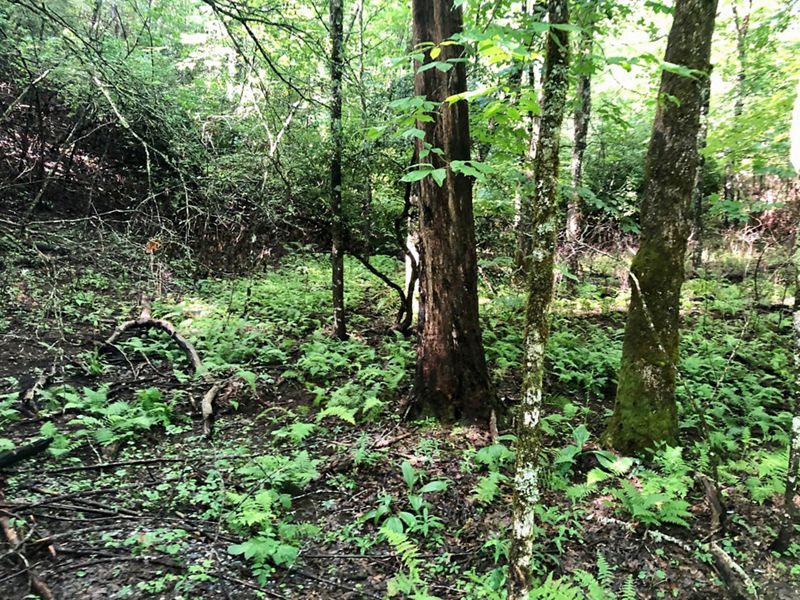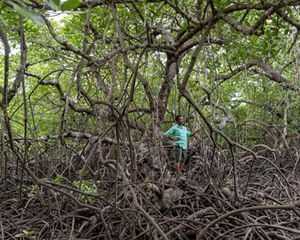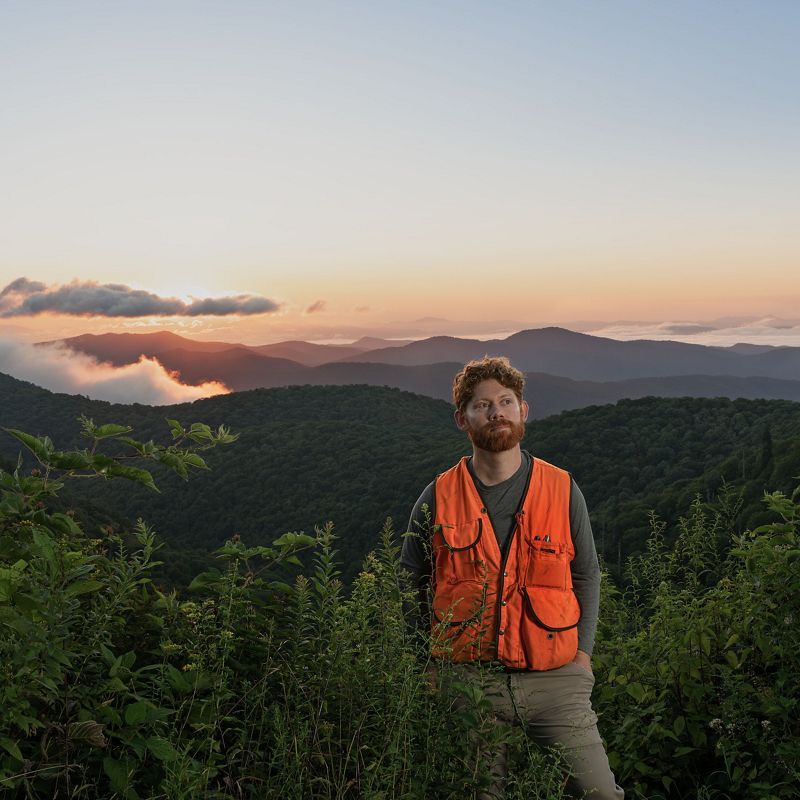
The Physician for the Forest
In the Blue Ridge Mountains of North Carolina, Greg Cooper pilots an experimental treatment regimen to restore the oak and hickory ecosystem.
Winter 2023 Issue
In the forests of the southern Blue Ridge Mountains, an ecosystem shift is occurring. Oak and hickory forests are giving way to maples and poplars that use more water as they grow. Greg Cooper, a forest ecologist for The Nature Conservancy in North Carolina, is leading an experimental effort to slow the shift and give the oaks and hickories—important for local wildlife—a fighting chance.
Timothy A. Schuler: What was your path to forestry?
Greg Cooper: I grew up in upstate New York, in a small town outside of Albany. I was really interested in reptiles and amphibians. My dad [and I] would do frog-calling surveys. We’d listen to get a sense of how many frogs were in an area, and a huge decline in amphibian populations was observable even in that time.
After undergrad, I served in Paraguay for two years as an environmental action volunteer working with small landholder farmers, implementing sustainable ag projects. Working in an agricultural economy and seeing how land was being converted in a pretty major way was also superformative.
The pairing of those two things—the biodiversity crisis and the conversion of a forest and the impacts that had on biodiversity—was a natural lead-in to forestry.
TS: You’re now a forest ecologist with The Nature Conservancy in western North Carolina. What makes the forest there unique and important to preserve?
GC: From a historical perspective, this is the cradle of forestry in America. The first foresters were trained right in our backyard, not even half a mile from where I live right now. Ecologically and biologically, this is an incredibly biodiverse region. It has the highest salamander biodiversity in the world. There’s a high amount of diversity of aquatic species. The number of tree species is overwhelming; I still don’t know them all. The most interesting ecotype that we work with, and the biggest, is our oak/hickory forest, [which] is incredibly important for biodiversity because of the food that oaks and hickories provide for wildlife. We need oaks to keep the forest fed.
TS: What are the biggest threats facing the region?
GC: The biggest threat is the decline of oaks. Period. In our forests right now mature oak trees are the dominant tree species—if you’re looking up [at the canopy]. If you’re looking down, you don’t see any of those oaks regenerating to become the next oak forest. [There is an overgrown mid-story of maples and poplars that are overcrowding the forest.] Oaks have become less competitive because of the history of fire suppression. Before Europeans arrived in this landscape, Indigenous populations burned the woods. They burned it for safety, for hunting, for gathering chestnuts. When we started putting more value on timber, we sought to suppress fire. We wanted to protect timber value. But by doing that, we sort of flipped the forest to favor a whole other suite of trees.
Why this is really concerning is that we are facing a transition from an oak-hickory forest to one that’s probably going to be dominated by maple and poplar. That’s really concerning from a biodiversity standpoint but also from a climate-change perspective. A poplar or a maple will use up to four times the amount of water as an oak. We have a lot of aquatic biodiversity in our streams; we have people who depend on that water for drinking water. Having a forest that uses more water means less water for everything else.
TS: Tell me about the work you’re doing to combat this trend.
GC: Most of my work is happening at the Silver Run Preserve. It’s a 1,400-acre property that was donated to TNC in 2004. What we’re doing right now is treating midstory trees. These are the trees that have been able to compete because there hasn’t been fire in the landscape. We go out with hatchets and little spray bottles of herbicide and we directly inject it into specific tree species to knock them back, to allow more light into the forest and allow oak seedlings to recruit. Then we’re combining [those] silviculture treatments with controlled fire. We currently have 700 acres of [controlled-] burn plots, some of which have been burned twice, some of which have been burned once, [and already] we’re getting more light and an immediate flush of herbaceous diversity. We’re getting a lot more berry species, more wildflowers.
TS: These methods have been described as experimental. How new is the approach?
GC: For us in this area, it’s very new. There hasn’t been a clear answer to the issue of oak regeneration, so in that way it is experimental. There aren’t very many people doing it, and definitely not at the scale that we are. We’re aiming for 900 acres over three years.
Over time, just using controlled fire will likely be able to [produce] the same effects. It’s expensive to go out there acre by acre and treat these trees, but in theory, it should be a one-time thing. It’s kind of like a surgery that corrects the problem. The fire will be the annual checkup.
TS: With controlled burns, you need a workforce that’s flexible because conditions completely dictate whether you’re going to burn that day or not. How have you built that workforce?
GC: We’ve been using fire in the mountains for about 20 years now. It’s a relatively new thing. And TNC has played a big role in that through the Fire Learning Network. We have a 23-person, on-call fire crew. We hire them every year. They’re people who retired from agency work; sometimes they’re new people looking to get into the fire profession. That fire crew will [perform] 10 to 20 controlled fires a year, which is a ton. We work on TNC properties, but we also go out to federal properties, state properties and across state lines as well. It’s a really innovative model that is being replicated across the country.
TS: What are you learning as you carry out these treatments?
GC: We have plots at Silver Run [where] we’re doing forest management treatments, and some that have been burned alone, and some that haven’t been burned at all. What we’re able to do with these monitoring plots is to see: Are we changing the forest density? Are we changing the forest’s fuel characteristics in regards to wildfire danger? Are we achieving what we’re hoping to achieve? We will be able to answer those questions within five to 10 years.
TS: People working on climate issues sometimes talk about the weight of the work on their shoulders. How do you handle that burden?
GC: It’s incredibly stressful. Like, I talk about the extirpation of the American chestnut, and I see the next thing coming our way. Our forests have changed irreparably. But for me, getting down on the ground and doing the work is therapeutic. If I can have an impact on this one-tenth-of-an-acre area, that’s something.

Magazine Stories in Your Inbox
Sign up for the Nature News email and receive conservation stories each month.
About the Creators
Timothy A. Schuler is a writer based in Kansas. He is a contributing editor for Landscape Architecture Magazine, and his work has also appeared in Bloomberg CityLab and Places Journal.
Nate Burrows is a photographer based in Asheville, North Carolina.
